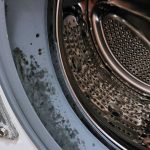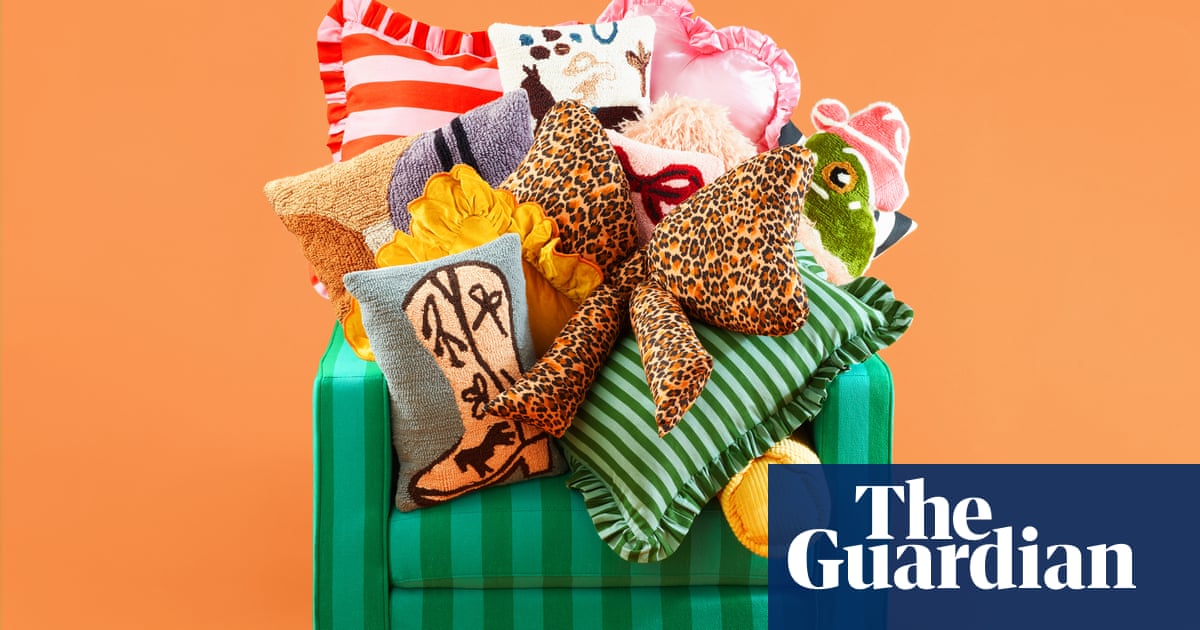Walk into any big UK supermarket, and somewhere between the pasta and pet food you’ll find an aisle stacked with seductively stylish yet affordable homeware. From tableware to throws, cushions to coasters, objets d’art to duvet covers, the shelves will be teeming with everything you could possibly need to furnish your home – all in the latest shades and styles, and most costing less than the price of a takeaway.
Just a few years ago, this would have seemed strange, but with Asda, Sainsbury’s and Tesco all launching own-brand homeware ranges in the past decade, and the expansion of Lidl and Aldi, both known for their “middle aisle” bargains, purchasing homewares during the weekly shop has become the new normal.
“If there were bits and bobs that could be bought, I would buy them,” admits Scottish former cheap homeware addict Carol Murdoch, 42. “You’d go shopping for a loaf of bread and come home with a candle.
“It took doing my master’s in sustainability for me to actually look at it, and go: ‘We’re being completely conned here,’” says the former teacher, and director at an outdoor learning company. “As much as I now go, ‘Blooming heck!’, I did it – I bought homeware, all the time, without giving it a second thought.”
In recent years, fast fashion has faced a reckoning – in part due to the Rana Plaza disaster in 2013, in which 1,134 people were killed and at least another 2,000 injured when a factory collapsed in Bangladesh. The garment workers inside – who operated in sweatshop conditions, earning less than $2 (£1.60) a day – made clothes for big name high street retailers, including Primark and Matalan. Since then, a slew of initiatives – from sustainable fashion week to Second Hand September – have changed how many of us buy and think about clothes.
Yet, at the same time, the ever-growing fast homeware industry has slipped under the radar. According to market and consumer data provider Statista, the UK homeware market has “expanded substantially” in the past decade. Business intelligence platform GlobalData estimates the industry was worth £14.32bn in 2023, with discount sellers witnessing the strongest growth, and key retailers including Dunelm, B&M, Ikea, The Range, Amazon and John Lewis.
The homeware market began to speed up in the years after the second world war, when brands such as Ercol – whose original designs are now highly sought-after as vintage pieces – began mass-producing modern, affordable furniture. By the 1970s, Ikea was expanding worldwide, opening its first UK store in 1987. Throughout the 1990s, production continued to grow. When Urban Outfitters arrived in the UK in 1998, it changed the game again; highly curated, trend-led homewares and gifts mingled with shoes and clothes. It was selling a lifestyle, and it wasn’t long before the rest of the high street caught on.
Zara Home was launched in 2003. It may have been the first fast fashion chain to add a dedicated homewares line, but it was far from the last. In 2009, H&M Home entered the market, and by the 2020s Primark and hyper-fast online brands such as Boohoo, Pretty Little Things and Shein had followed suit.
The similarities between the fashion and homewares industries is no coincidence. Interior designer Helen Gordon – who has since co-founded regenerative interior design and build studio Nested Living, and sits on the British Institute of Interior Design’s sustainability committee – witnessed this first-hand as a retail buyer for high street homewares brands in the early 2000s.
“It was very much about looking and understanding what fashion did, to make it the same,” she says. Although Gordon loved her job as a buyer, she grew increasingly uncomfortable with the hidden human cost.
“You’re going to China, and in the factories you’re seeing people who only see their families for two weeks a year, when it’s Chinese new year, and they’re in a dormitory, lights go out at 9 o’clock, there’s no electricity after that. That’s their life,” she says. “It’s all ethical, quality standard, big companies I was working with, but it really hits you when you go there and you see it.”
Six years into her career, Gordon’s misgivings about the high street’s business practices crystalised when the company she was working for went bust, with shocking consequences.
“Suppliers were left with already made stock and substantial unpaid invoices. There was always a clear power dynamic, with us as the retailer often in the driving seat, but this imbalance became particularly evident during this difficult time,” she says. “Not long after we went into administration, one of our suppliers in the far east tragically took his own life. As the primary liaison, I felt a deep sense of responsibility; they’re our friends, our suppliers. I couldn’t help but reflect on whether the pressures of working with us had contributed to his situation. From that point on, I just thought: ‘I can’t keep doing this.’ I realised this just wasn’t a sustainable way of working for me.”
It’s not just foreign workers who are being exploited. In 2018, Bristol-based ceramicist Sarah Wilton discovered that Urban Outfitters were selling factory-made pieces apparently copied from her handcrafted designs. Her pieces were part of an exclusive range of 100 hand-thrown plant pots and ornamental vases that she had created for the luxury London department store Liberty.
“The collection was unapologetically handmade,” Wilton says. “The motifs were inspired by music and melody, and the forms fused a combination of inspirations from mid-century British ceramic design, Oriental ornamentalism and art nouveau colour palettes.”
While each of Wilton’s pieces was unique and retailed for £55 to £100; Urban Outfitters batch-made copies were on sale for £15 to £30.
“It crushed me,” says the 36-year-old. “I was working so hard, juggling jobs, serious graft. I had a newfound confidence in the stuff I was making, I had been picked up by Liberty and featured in American Vogue. But then, very swiftly, it was followed by the Urban Outfitters incident. I felt totally robbed.”
With the help of friends and mentors, Wilton sought legal advice and created a storm on social media. In response, Urban Outfitters issued a statement, saying: “We take intellectual property very seriously, both in protecting what has been developed by our own artists and designers, and also respecting the intellectual property and designs of others. Out of deference to the artist Sarah Wilton, we have removed the vase in question from stock.”
However, Wilton says the situation was never fully resolved to her liking: “I had some evidence of units sold, but received no receipt of units made, and no receipt of the destruction of remaining items. They did, in fact, continue to sell them after the initial dispute was resolved – followers shared this with me and I had to repeat the process. They may well have sold remaining units to other wholesalers, as this is fairly common practice and has happened to artists and makers I know.”
Unfortunately for independent makers such as Wilton, high-end looks for low prices is exactly the appeal for many shoppers.
“I know dupes are frowned upon, but I love that people are able to have the affordability of the pieces they like,” says interiors influencer Ellie Fenlon, who has more than 100k followers and subscribers across TikTok, Instagram and YouTube, where she posts shopping hauls, trend roundups and styling videos. “Some pieces are an extortionate price, so if brands are able to create it for those with smaller budgets to enjoy, why not?”
As well as her eye for an uncanny copy – “when it comes to spotting a dupe, I’m on it, which is why a lot of people follow my accounts” – Fenlon is also known for her visits to her local Homesense store (a subsidiary of TK Maxx), where she worked for six years as a visual merchandiser.
“My audience love a ‘come shop with me’,” she says. “I’m in there every single day.”
Fenlon also admits she’s “guilty” of loving a seasonal trend – and she’s not alone. While historically Christmas was the only season in which people redecorated their homes, in recent years homewares retailers have created entire ranges to mark everything from Valentine’s Day to Halloween. A survey released by YouGov in October 2024 found that 19% of UK adults were planning to purchase “autumn decor”, including candles and diffusers, but also new lighting, kitchenware and cushions to mark the season. Unsurprisingly, this trend owes much to social media, with 39% of respondents saying their purchases were inspired by influencers, and 37% by social posts from retailers.
“I love the newness and excitement it brings to the homeware game, otherwise it would be boring,” says Fenlon. “Just like having trending pieces in your wardrobe, I also like them in my home.”
Murdoch, too, knows the appeal of refreshing your interiors throughout the year, saying: “There is something nice about switching your home up and making it seasonal. I used to have boxes full of seasonal decorations. In spring, I would have little coloured eggs, my pastel-coloured candles and holders, vases, little lambs – ornaments like that. Then, come autumn, I’d pull out my owls – I loved my owls. Winter, you’d be looking at getting the reindeers out and things like that, wintery-themed animals. And then, of course, there were decorations just for Christmas.”
As with fast fashion, the environmental impact of our lust for the latest, on-trend homeware is catastrophic. Research commissioned by British pottery brand Denby as part of its Reloved campaign found that the British throw away about 70m homeware items each year, with 35% of people admitting to binning things simply because their tastes have changed. But the amount of waste is not the only problem. Due to the diversity of materials and toxic compounds used, fast homeware is incredibly complex to dispose of – and much is not recyclable.
“In terms of the flame retardants we have to use on our cushions and furnishing fabrics, it’s all phthalates, so you can’t just take them to the dump,” explains Gordon. “Then, if it’s chipboard, that’s already rubbish that can’t be recycled, and then it’s laminated over as well. There are these recycling places that have started to come up – like for MDF, there’s one in south Wales that was set up a couple of years ago. But then how do you get your MDF to them?”
It’s a problem the industry is aware of, and many big-name brands are actively taking steps to be more transparent with consumers and lessen their impact. As one of the leading names in the industry, Ikea is at the forefront of this with a multi-pronged strategy to transition to a fully sustainable, yet still profitable, business model by 2030. H&M has included detailed information about its supply chain for each item on its website since 2019, and has a line of products under its Meet the Maker banner, which are made in collaboration with small-scale artisans around the world.
As to how we move forward, Gordon believes we can’t rely on governments or industry alone to drive the change, saying: “I’m very concerned about this idea of greenwashing. There’s a whole world of hidden lobbying going on by people who are trying to keep this industry going, because they know that their company will go under otherwise.”
She hopes that raising awareness of the problem will help shift our collective mindset, saying: “Somehow we need to slow down. We need to start thinking about how we value things, and getting back to this whole idea of stories – thinking about why you’re buying something, where it has come from and who has made it.”
Murdoch agrees, and hopes that her story will inspire others. “You can go from being somebody like me who has seasonal boxes full of tat, to someone who now actively discourages it,” she says. “Months go by where I don’t buy anything.”
Murdoch is not alone in embracing a “less is more” philosophy. Search the term “underconsumption” on social media, and you’ll find thousands of posts celebrating this anti-consumerist ideology, with users sharing tips on upcycling and visible mending, or simply celebrating well-worn pieces they’ve had for years.
As Murdoch has learned first-hand, conscious consumption can lead to a sense of satisfaction that more than makes up for the loss of quick-fix dopamine hits. She says: “I adore my wool blankets. They’re now probably 10 years old, and yet I still feel joy when I coorie under them. I didn’t feel that way about the £5 fleece ones from the supermarket that fall apart in two or three years.
“Most things we buy don’t have an emotional connection. It’s made no difference, except to the fat cats. Yet if you buy something from a local producer that’s properly handmade, you know it’s making a difference to somebody’s life. It’s something that will last a lifetime, that you’ll be able to pass on. It’s something that will bring you joy for years to come.”
after newsletter promotion
And when it comes to seasonal flourishes, she now goes directly to the source, and brings the outside in.
“My interiors always had a nature theme, but now I appreciate decorating my home with the real thing, instead of buying trinkets from a shop,” she explains. “Right now I have a vase full of different grasses, and another full of seed heads and dock leaves, and they’re far prettier than any mass-produced candle or vase could ever be.”
Spot the difference
Do you know your high-end from your high street?
Marta Bonilla hand-moulded terracotta vase, made to order in Barcelona, Beunica, £403.
Ceramic vase with handles, made in China, Zara Home, £19.99.
Drinking glass with blue dots, country of origin not stated, Flying Tiger, £5.
Clara tumbler, made from recycled glass, hand-blown in Mallorca, Woven Rosa, £25.
Etta scalloped pendant shade, handmade in India by independent artisans using traditional techniques for small, family-owned UK business Hastshilp, £195.
Rattan flower pendant, country of origin not stated, The Range, £19.99.
Striped cushion, 100% polyester, country of origin not stated, Primark, £10.
Folkestone cushion cover, 100% European linen printed with eco-friendly dyes and made in small batches by skilled artisans, Amuse la bouche, £85.
Dual colour glass candle holder, hand-crafted from borosilicate laboratory glass, chosen for its clear, crisp finish, by UK-based, female-owned B Corp Block Design, £35.
Glass candle holder, made in China, Sostrene Grene, £4.84.
Reactive-glaze stoneware mug, made in Thailand, H&M, £4.99.
Stoneware mug, handmade in York by potter Philip Magson, Hare & Wilde, £20.
Wiggle table lamp and shade, handmade by independent British craftspeople using traditional techniques, Bias Editions, £165.
ValueLights Wiggle metal lamp with scallop shade, country of origin not stated, B&Q, £39.99.












